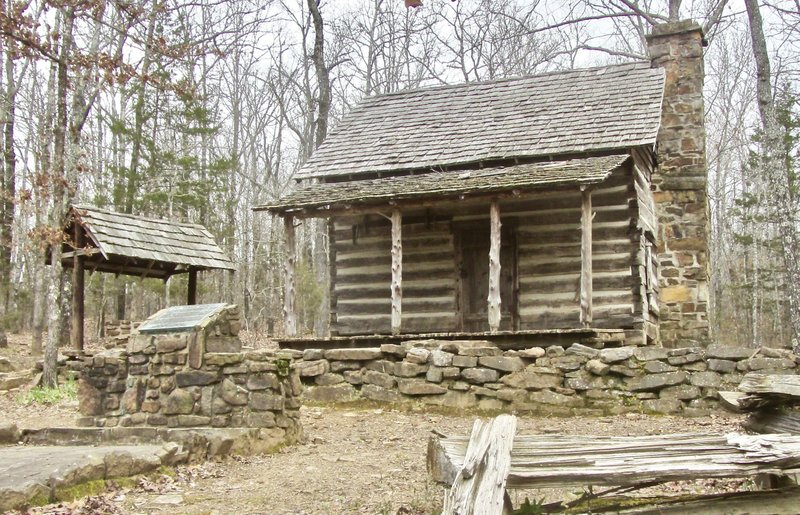WOOLLY HOLLOW STATE PARK — The rustic cabin, which originally housed a family of six, is smaller than a typical one-bedroom apartment of today, but this snug home has weathered time's tests since it was built in 1882 from logs 18 feet long and more than a foot thick.
The Woolly Cabin, moved less than a mile to its present location in 1975, offers a glimpse of family life in rural Arkansas before electricity, telephones, indoor plumbing and other modern amenities. Air conditioning involved leaving open the front and back doors, then hoping for a steady breeze and a dearth of mosquitoes. A loft provided sleeping space above the single ground-floor room.
Woolly Hollow State Park and Lake Bennett
To go: To reach the park from Little Rock, take Exit 125 off of I-40 at Conway and go 12 miles north on U.S. 65. Turn right on Arkansas 285 to the park entrance in 6 miles.
Information: Visitor Center open daily 8 a.m. to 5 p.m. Admission is free. Visit ArkansasStateParks.… or call (501) 679-2098.
To 21st-century eyes, the accommodations may seem too cramped and thread-bare for daily comfort. But Martin Alfred Woolly's family and later residents managed decent lives here for the better part of a century.
Now the prime historical attraction in Woolly Hollow State Park, about 50 miles north of Little Rock, the cabin is sparsely furnished on the ground floor. A treadle-operated sewing machine marks the fact that most clothing for rural families back then was homemade by wives and daughters.
The sizable fireplace, as explained by park interpreter Sam Files, was used mainly for winter heating rather than cooking. Meals probably were prepared outdoors on a communal fire that served perhaps a half-dozen homesteading families.

From Memorial Day to Labor Day, the cabin is opened to the public at 2 p.m. on Sundays for a guided tour by Files or another interpreter. During the rest of the year, it's possible to request a look inside if a staff member is available.
Another piece of Woolly Hollow history is 40-acre Lake Bennett. It was created in 1935 when the federal Works Progress Administration (WPA) and Civilian Conservation Corps (CCC) built a dam here.
The lake is named for Hugh Bennett, first director of the U.S. Soil Conservation Service. Under his guidance, a pioneering approach to land management was employed. The methods included crop rotation, strip cropping, terracing, and scientific planting of trees and other vegetation.
Arkansas later bought the property's 440 acres from Faulkner County and opened the site in 1973 as Woolly Hollow State Park. Lake Bennett has become a popular fishing venue for bass, crappie, bream and catfish. Visitors can rent canoes, kayaks, fishing boats and pedal boats. There are 30 campsites equipped with water, electricity, sewer hookups and barbecue grills.
Hikers can circle the lake on the 3.5-mile Huckleberry Nature Trail, which winds through wooded landscapes. Branching off the Huckleberry path is a half-mile trail leading to Woolly Cabin. A recent addition to the state park is Enders Fault Mountain Bike Trail, a 9-mile system with lake views and creek crossings.
A free heavenly event is scheduled for 6:30-9 p.m. Saturday, meeting at the parking lot of Woolly Hollow's snack bar. Billed as the Spring Star Party, it is sponsored by the Central Arkansas Astronomical Society.
Under the state park's relatively clear rural skies, society members will have telescopes available for visitors to scan the heavens. The society's star-gazers will supply pointers on observing constellations and other celestial features of late winter in the Northern Hemisphere.
Style on 03/10/2020

